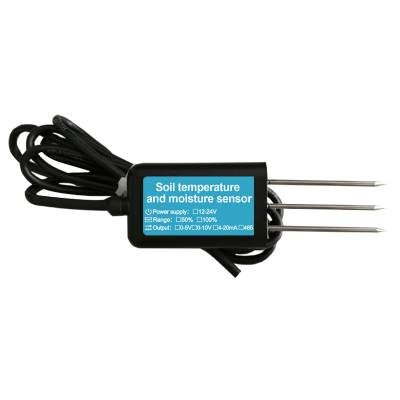
New Soil Sensor Technology Revolutionizes Farming Practices
soil sensor technology stands out as a game-changer, offering farmers unprecedented insights into the health and behavior of their soil.

soil sensor technology stands out as a game-changer, offering farmers unprecedented insights into the health and behavior of their soil.
In the ever-evolving landscape of agriculture, technological advancements continue to reshape how crops are grown, managed, and harvested. Among these innovations, soil sensor technology stands out as a game-changer, offering farmers unprecedented insights into the health and behavior of their soil. This revolutionary technology not only enhances productivity but also promotes sustainable farming practices, ensuring the long-term viability of our agricultural systems. This article delves into the intricacies of new soil sensor technology, exploring its principles, benefits, applications, and the transformative impact it is having on farming practices worldwide.

Historically, farmers have relied on their intuition, experience, and traditional methods to assess soil conditions. While these approaches have their merits, they often lack precision and consistency. The advent of modern soil sensors marks a significant leap forward, incorporating principles of electronics, data science, and informatics to provide real-time, detailed information about soil properties.
Soil sensors can measure a multitude of parameters, including moisture content, temperature, pH levels, electrical conductivity, nutrient availability, and even the presence of contaminants. These measurements are crucial for understanding soil health, which directly influences plant growth, crop yield, and overall farm productivity.
Soil sensors operate on various principles, each tailored to measure specific soil properties. Some of the most common types include:
Moisture Sensors: These sensors measure soil moisture content, a critical factor for plant growth. They work by utilizing capacitance, resistivity, or neutron scattering techniques to estimate water content. Capacitive sensors, for instance, measure changes in electrical capacitance between two electrodes buried in the soil, which vary with moisture levels.
Temperature Sensors: Soil temperature affects numerous biological and chemical processes in the soil. Thermistor-based sensors are commonly used, as they exhibit a predictable change in resistance with temperature. This allows for accurate temperature monitoring, crucial for understanding plant growth stages and nutrient mineralization rates.
pH and EC Sensors: pH sensors measure soil acidity or alkalinity, influencing nutrient availability and plant health. Electrical conductivity (EC) sensors, on the other hand, assess the soil's salinity, which can impact plant water uptake and nutrient balance. Both types often employ glass or solid-state electrodes to measure potential differences related to ion concentration.
Nutrient Sensors: Advanced optical and electrochemical sensors can detect nutrient levels, such as nitrogen, phosphorus, and potassium, in the soil solution. Near-infrared spectroscopy (NIRS) is one technology that analyzes soil reflectance to estimate nutrient concentrations non-destructively.
Gas Sensors: These are used to monitor soil gases like oxygen, carbon dioxide, and methane, which provide insights into microbial activity and soil respiration. Electrochemical sensors or gas chromatography systems are typically employed for this purpose.
The integration of soil sensors into farming practices offers numerous benefits:
Precision Agriculture: By providing detailed, real-time data, soil sensors enable precision farming. Farmers can apply water, fertilizers, and pesticides more precisely, reducing waste and environmental footprint while enhancing crop yield and quality.
Resource Optimization: Improved soil monitoring leads to better resource allocation. For example, knowing exact moisture levels allows for efficient irrigation scheduling, conserving water. Similarly, targeted nutrient applications minimize over-fertilization and associated environmental pollution.
Early Detection of Problems: Soil sensors can detect early signs of nutrient deficiencies, compaction, salinity, or diseases, allowing for proactive management before significant crop damage occurs.
Sustainable Farming: Enhanced understanding of soil health fosters sustainable farming practices. By maintaining optimal soil conditions, farmers can reduce reliance on chemical inputs, enhance soil biodiversity, and improve soil carbon sequestration, contributing to climate resilience.
Decision Support Systems: Data collected by soil sensors can be integrated into decision support systems (DSS), providing farmers with actionable insights and recommendations tailored to their specific field conditions.
The applications of soil sensor technology span diverse farming systems and crop types:
Arid and Semi-Arid Regions: In water-scarce environments, soil moisture sensors are crucial for efficient irrigation management, maximizing crop production with minimal water use.
Horticulture and Greenhouses: Precision control of soil conditions is vital in controlled environments. Sensors help maintain optimal pH, moisture, and nutrient levels, ensuring consistent crop growth and quality.
Row Crops and Large-Scale Farming: In extensive farming operations, soil sensors enable zone-specific management, tailoring inputs to the varying needs of different field areas.
Organic Farming: Organic farmers rely on soil health indicators to maintain productivity without synthetic inputs. Sensors provide critical data on soil biology, nutrient cycling, and organic matter content.
Research and Education: Academic and research institutions use soil sensors to study soil processes, develop new management strategies, and educate future generations of farmers and scientists.
Despite its promise, soil sensor technology faces several challenges, including high initial costs, data integration complexities, and the need for specialized training. Additionally, sensor accuracy can be affected by soil type, moisture content, and temperature variations, necessitating regular calibration and maintenance.
Ongoing research is addressing these challenges, focusing on developing more affordable, robust, and user-friendly sensors. Advances in IoT (Internet of Things) technology are enabling remote monitoring and real-time data analytics, further enhancing the utility of soil sensors. Machine learning algorithms are being employed to process vast datasets, providing farmers with more accurate predictions and personalized recommendations.
Moreover, the development of multi-parameter sensors that can measure multiple soil properties simultaneously is a promising area of research. This would streamline data collection and analysis, making precision farming more accessible to small-scale farmers.
New soil sensor technology represents a paradigm shift in farming practices, empowering farmers with unprecedented knowledge about their soil. By optimizing resource use, enhancing crop productivity, and fostering sustainable practices, soil sensors are crucial tools in the quest for food security and environmental stewardship. As technology continues to evolve, the potential for soil sensing to revolutionize agriculture grows ever brighter, heralding a new era of smart, efficient, and resilient farming.